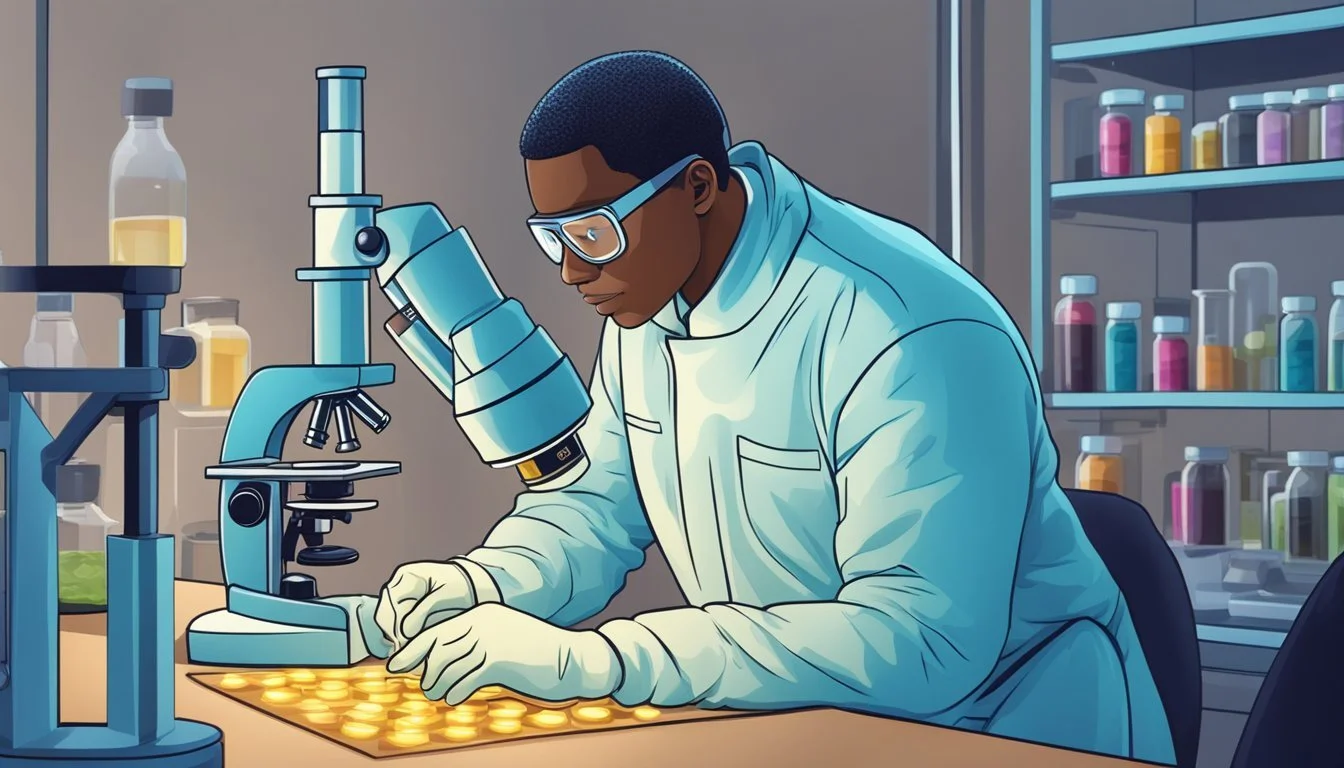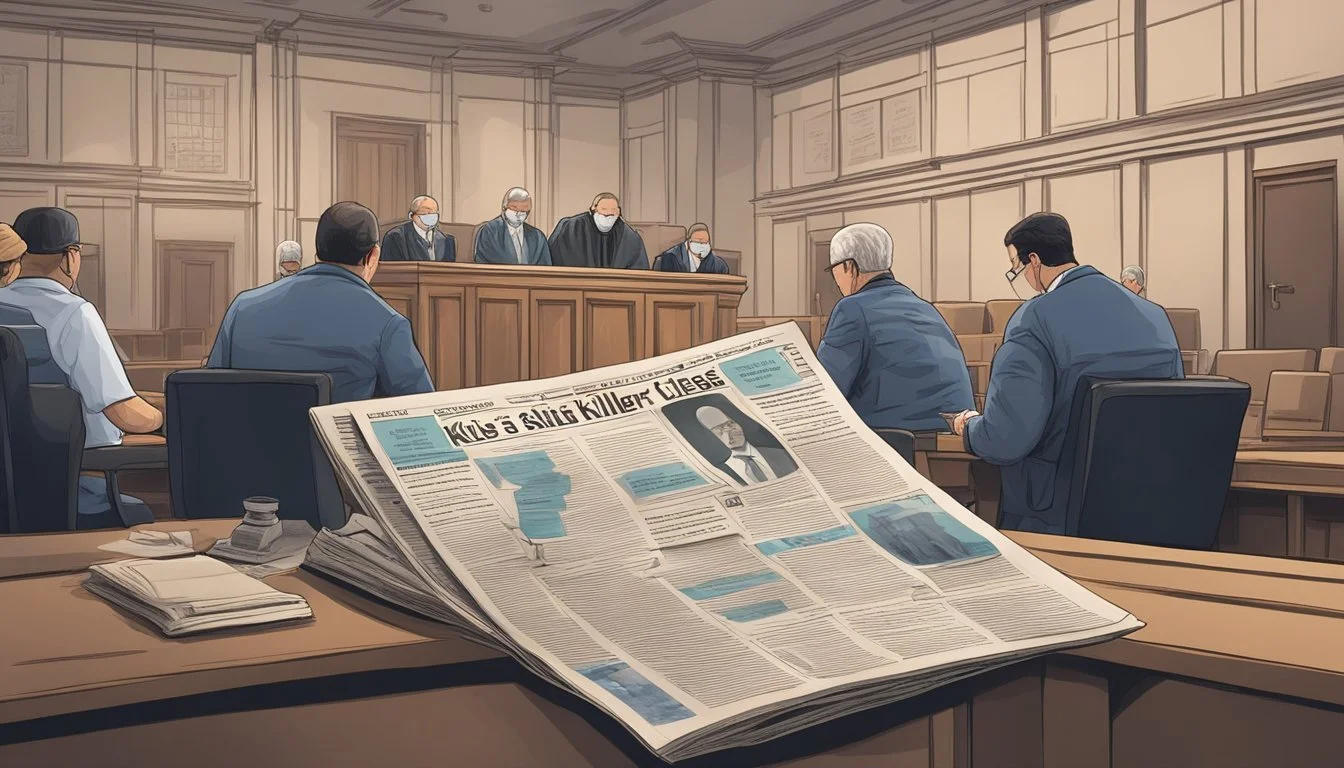Eddie Lee Mosley's Cold Case: New DNA Links Emerge Years After Notorious Broward Killer's Death
Eddie Lee Mosley terrorized Fort Lauderdale, Florida in the 1970s and 1980s, committing a series of brutal rapes and murders. For years, his crimes went unsolved, leaving families devastated and justice elusive. Some cases even led to wrongful convictions, compounding the tragedy.
Advances in DNA technology ultimately cracked Mosley's cold cases, linking him to at least eight murders between 1973 and 1987. In the late 1990s and early 2000s, investigators reexamined old evidence using new forensic techniques. This breakthrough allowed authorities to build a case against Mosley, who had long been a suspect.
Mosley was arrested in 2001 after DNA profiling connected him to multiple crime scenes. His capture brought closure to many unsolved cases and exonerated those wrongly convicted. Even after Mosley's death in 2020, DNA evidence continues to play a crucial role in solving cold cases linked to his crimes, demonstrating the enduring impact of forensic advancements in criminal investigations.
The Crimes of Eddie Lee Mosley
Eddie Lee Mosley terrorized Broward County, Florida from 1973 to 1987, committing a series of brutal murders and sexual assaults. His crimes primarily targeted women in Fort Lauderdale, leaving a trail of fear and devastation in his wake.
A Timeline of Terror
Mosley's killing spree began in 1973 and continued for over a decade. He typically attacked women in their homes or lured them to secluded areas.
In 1976, Mosley murdered Chiquita Lowe, one of his earliest confirmed victims. The crime went unsolved for years.
Between 1980 and 1984, Mosley's attacks intensified. He killed several women during this period, including Dorothy McGriff and Shandra Whitehead.
Loretta Young Brown became one of Mosley's final victims in 1987. Her murder marked the end of his active killing period.
The Victims and Their Stories
Mosley's victims were primarily African American women. Many lived in disadvantaged neighborhoods, making them vulnerable targets.
Chiquita Lowe, a 23-year-old mother, was strangled in her home. Her case remained cold until DNA evidence linked Mosley decades later.
Dorothy McGriff, 25, was found murdered in an empty field. Her death highlighted the pattern of Mosley's attacks on young women.
Shandra Whitehead, only 8 years old, became Mosley's youngest victim. Her tragic story shocked the community and intensified the manhunt.
Fort Lauderdale: A City in Fear
Mosley's crimes cast a shadow over Fort Lauderdale and surrounding Broward County. Residents, especially women, lived in constant fear.
Local law enforcement faced criticism for their handling of the cases. The murders exposed racial disparities in policing and media coverage.
Community groups organized neighborhood watches and safety programs in response to the killings. These efforts brought residents together but couldn't fully alleviate the pervasive sense of danger.
The crimes had a lasting impact on Fort Lauderdale's reputation. Tourism suffered as news of the murders spread beyond Florida.
The Justice System and Wrongful Convictions
Eddie Lee Mosley's crimes exposed critical flaws in the justice system. Two men were wrongly convicted for murders Mosley committed, spending years behind bars for crimes they didn't commit.
The Case of Frank Lee Smith
Frank Lee Smith was convicted of the 1985 rape and murder of 8-year-old Shandra Whitehead in Fort Lauderdale. He maintained his innocence but spent 14 years on death row.
Smith died of cancer in prison in 2000, 11 months before DNA evidence exonerated him and implicated Eddie Lee Mosley as the true perpetrator. His case highlighted the devastating consequences of wrongful convictions and the importance of post-conviction DNA testing.
The Innocence Project took up Smith's case, pushing for the DNA analysis that ultimately cleared his name posthumously.
Jerry Frank Townsend's Misfortune
Jerry Frank Townsend, a man with intellectual disabilities, was wrongly convicted of six murders and one rape in the 1970s. He spent 22 years in prison before DNA evidence exonerated him in 2001.
Investigations revealed that police had coerced false confessions from Townsend. The DNA evidence that freed him also linked some of the crimes to Eddie Lee Mosley.
Townsend's case underscored the vulnerability of individuals with mental disabilities in the criminal justice system and the need for safeguards against coerced confessions.
The Injustices of the Justice System
The wrongful convictions of Smith and Townsend exposed serious flaws in Broward County's criminal justice system:
Overreliance on eyewitness testimony
Inadequate scrutiny of forensic evidence
Failure to investigate alternative suspects
These cases led to reforms, including:
Establishment of cold case units
Increased use of DNA testing
Enhanced training for law enforcement
The exonerations also sparked a broader conversation about the death penalty and the risk of executing innocent people. They demonstrated the critical importance of organizations like the Innocence Project in securing justice for the wrongfully convicted.
Advances in DNA Technology
DNA testing has revolutionized cold case investigations, providing new leads and conclusive evidence decades after crimes occurred. Forensic technology has progressed dramatically, moving beyond traditional methods to advanced genetic analysis techniques.
The Role of DNA Testing in Cold Cases
DNA evidence has become a powerful tool for solving long-unsolved crimes. Investigators can now extract and analyze genetic material from minute samples collected at crime scenes years ago. This has led to breakthroughs in cases that had gone cold, including those linked to Eddie Lee Mosley.
In the late 1990s and early 2000s, advances in DNA profiling allowed authorities to reexamine old evidence from Broward County murders. Genetic material from crime scenes was tested using new techniques, leading to matches with Mosley's DNA profile.
These DNA matches provided crucial links between Mosley and multiple unsolved homicides. The technology allowed investigators to build a stronger case and connect crimes that were previously thought to be unrelated.
Forensic Evolution: From Composite Sketches to DNA Profiling
Forensic methods have evolved significantly over the decades. In the past, investigators relied heavily on eyewitness descriptions and composite sketches to identify suspects. While useful, these techniques had limitations and could lead to misidentifications.
The introduction of DNA profiling marked a turning point in forensic science. This technology allows for the creation of a unique genetic "fingerprint" from biological evidence left at crime scenes.
DNA profiling has proven far more accurate and reliable than traditional identification methods. It can definitively link suspects to crimes or exonerate the wrongly accused. In Mosley's case, DNA evidence helped solve multiple cold cases and provided closure to victims' families years after the crimes occurred.
The Investigation Aftermath
DNA technology revolutionized the Eddie Lee Mosley case, solving numerous cold cases and revealing a complex pattern of crimes. This breakthrough led to a reevaluation of investigation methods and raised important legal questions.
The Breakthrough in Cold Cases
Advanced DNA profiling techniques in the late 1990s and early 2000s allowed investigators to reexamine old evidence from crime scenes linked to Eddie Lee Mosley. This technological leap proved crucial in solving several Broward County cold cases.
Genetic material previously untestable yielded new insights, connecting Mosley to multiple unsolved murders. The forensic advancements highlighted the importance of preserving evidence, even in decades-old cases.
Investigators meticulously revisited each crime scene, applying modern forensic methods to uncover new leads. This process not only linked Mosley to additional victims but also exonerated wrongfully convicted individuals.
Analyzing the Modus Operandi
As more cases were solved, investigators gained a clearer picture of Mosley's modus operandi. His crimes typically targeted vulnerable victims in Fort Lauderdale and surrounding areas.
Mosley's pattern involved:
Selecting isolated locations
Employing brutal physical force
Leaving minimal evidence at crime scenes
This analysis helped detectives connect previously unlinked cases to Mosley. It also revealed the extent of his two-decade killing spree, which had terrorized South Florida.
Understanding Mosley's methods proved vital in solving additional cold cases and preventing similar crimes in the future.
The Legal and Ethical Implications
The resolution of Mosley's cases brought significant legal and ethical challenges to light. Two Broward men, including Frank Lee Smith, were cleared of murders now attributed to Mosley.
Smith's case was particularly tragic:
Spent 14 years on Death Row
Exonerated posthumously through DNA evidence
These wrongful convictions sparked debates about:
The reliability of eyewitness testimony
The importance of DNA testing in capital cases
The need for thorough investigations before prosecution
The aftermath of Mosley's crimes led to calls for reform in the criminal justice system, emphasizing the critical role of forensic evidence in ensuring accurate convictions.
Eddie Mosley's Final Chapter
Eddie Lee Mosley's case took an unexpected turn after his death in 2020. New DNA evidence emerged, reshaping the narrative of his crimes and impacting the families of his victims.
Death and Posthumous Developments
Eddie Lee Mosley died on May 28, 2020, while in custody at a psychiatric facility. He was 73 years old. After his death, the Broward County Sheriff's Office continued investigating cold cases linked to Mosley.
In 2021, advanced DNA testing techniques uncovered new evidence in previously unsolved murders from the 1980s. Three additional victims were identified as Mosley's, bringing his total known victim count to 11.
These findings prompted a review of other unsolved homicides from 1973 to 1987. Investigators focused on cases with similar victim profiles and crime scene characteristics to Mosley's known attacks.
Impact on the Victims' Families
The posthumous developments brought mixed emotions for the victims' families. Many expressed relief that long-standing questions were finally answered.
Some families found closure in knowing their loved ones' cases were solved. Others felt frustrated that Mosley never faced justice for these additional crimes.
Support groups formed to help families cope with the renewed attention on their tragedies. These groups provided a space for shared healing and advocacy for cold case investigations.
The Broward County Sheriff's Office established a dedicated hotline for families seeking updates on cases potentially linked to Mosley. This initiative aimed to improve communication and transparency in the ongoing investigations.
Legacy and Lessons Learned
Eddie Lee Mosley's case exposed critical flaws in the justice system and forensic practices. It highlighted the need for protecting innocent individuals and improving law enforcement methods.
Protecting the Innocent
Mosley's crimes led to wrongful convictions of innocent men. Jerry Frank Townsend spent 22 years in prison before DNA evidence exonerated him. Frank Lee Smith died on death row before being cleared posthumously. These cases spurred reforms in eyewitness identification procedures and interrogation techniques.
The Innocence Project became involved, advocating for DNA testing to free the wrongfully convicted. This case underscored the importance of preserving evidence and allowing post-conviction DNA testing. It also raised questions about the reliability of confessions, especially from individuals with mental disabilities.
Improving Law Enforcement and Forensic Practices
Mosley's case prompted changes in how law enforcement agencies handle serial killings. The FBI's Violent Criminal Apprehension Program (ViCAP) was established to better track and link related crimes across jurisdictions.
Advances in DNA technology played a crucial role in solving these cold cases. This led to increased investment in forensic science capabilities and training for investigators. Law enforcement agencies now emphasize the importance of properly collecting and preserving biological evidence.
The case also highlighted the need for better mental health evaluations in the criminal justice system. It led to improved protocols for assessing suspects' competency to stand trial and their mental state during alleged crimes.




